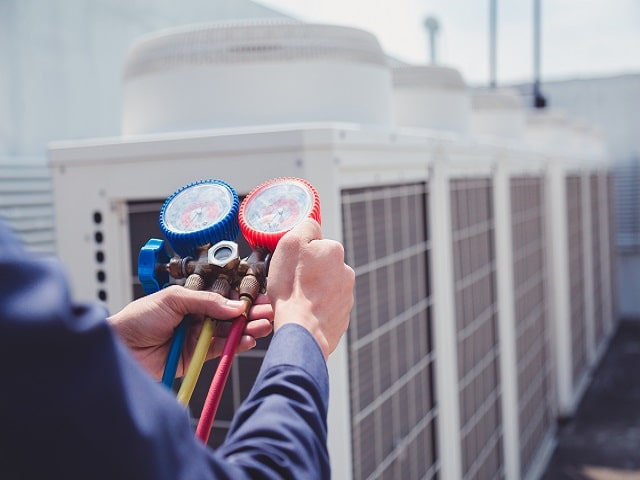Between Air Conditioning and Allergies

In the perpetual battle against allergies, one often overlooks the sanctuary of their own home as a potential battleground. Air conditioning, a blessing in sweltering summers, can ironically serve as a conduit for allergens, triggering discomfort and distress for allergy sufferers. However, armed with knowledge and strategic measures, one can transform their air conditioning system from foe to ally in the fight against allergies.
Understanding the Connection
The relationship between air conditioning and allergies is intricate yet pivotal. While air conditioning aids in filtering out outdoor pollutants, it can harbor its own array of allergens if not maintained diligently. Air conditioning systems, particularly when left unchecked, become breeding grounds for dust mites, mold, and pet dander—all notorious allergens. Moreover, improper ventilation exacerbates the issue by circulating these allergens throughout indoor spaces, intensifying allergic reactions.
Tips for Allergy Sufferers
1. Regular Maintenance
Routine maintenance emerges as the cornerstone of allergy management in air conditioning systems. Ensure periodic cleaning of filters, ducts, and vents to prevent the accumulation of allergens. Professional servicing at least twice a year is advisable to address underlying issues and uphold optimal air quality.
2. Invest in High-Quality Filters
Not all filters are created equal. Opt for high-efficiency particulate air (HEPA) filters capable of trapping minute particles, including allergens, with unmatched efficacy. While slightly pricier, the long-term benefits outweigh the initial investment, offering comprehensive allergen removal and improved air circulation.
3. Maintain Optimal Humidity Levels
Humidity serves as a catalyst for mold and dust mite proliferation, exacerbating allergic symptoms. Set humidity levels between 30% to 50% to create an inhospitable environment for allergens while fostering comfort. Consider utilizing dehumidifiers in damp areas to mitigate moisture accumulation and inhibit allergen growth. For more insights and further information about choosing an air conditioning company, feel free to visit their page to learn more.

4. Implement Proper Ventilation
Effective ventilation is indispensable in mitigating allergen buildup and enhancing indoor air quality. Ensure adequate airflow by keeping vents unobstructed and utilizing exhaust fans in moisture-prone areas such as bathrooms and kitchens. Additionally, consider installing trickle vents to facilitate continuous air exchange without compromising energy efficiency.
5. Adopt Allergy-Friendly Practices
Supplement air conditioning efforts with allergy-conscious habits to fortify defenses against allergens. Regular vacuuming using HEPA-equipped vacuums, laundering bedding in hot water weekly, and minimizing indoor plants—all contribute to allergen reduction and foster an allergy-friendly environment.
Conclusion
In the intricate interplay between air conditioning and allergies, knowledge emerges as the most potent weapon. By comprehending the nuances of air conditioning systems and implementing strategic measures, allergy sufferers can reclaim their sanctuaries and breathe easier. Regular maintenance, utilization of high-quality filters, humidity regulation, proper ventilation, and adoption of allergy-friendly practices collectively form a formidable defense against allergens, transforming air conditioning from a liability to a source of relief.
Remember, in the pursuit of allergy management, vigilance and proactive measures are paramount. By nurturing a symbiotic relationship with your air conditioning system, you pave the path toward a haven free from the tyranny of allergies.


 How to Create a Successful Financial Freedom Plan
How to Create a Successful Financial Freedom Plan  How to Use Social Media for Brand Building
How to Use Social Media for Brand Building  SEO Tools vs. Manual Optimization
SEO Tools vs. Manual Optimization  How Interest Rates Affect Home Prices
How Interest Rates Affect Home Prices  Pets Analysis Online Ecommerce Store
Pets Analysis Online Ecommerce Store  Medical Alert System Costs
Medical Alert System Costs